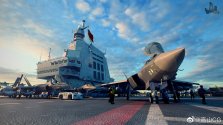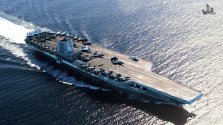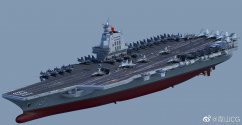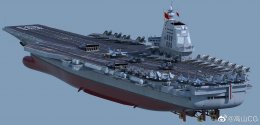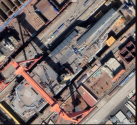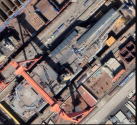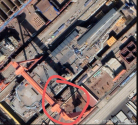You made the point in the previous post. Lack of windows indicates lack of electrical and other equipment in that space. Generally, that is the last large thing to put in the Island. And the installation of that happens only after the other large equipment and sensors in the ship are installed and pass initial testing. One of the things you want to ensure before you exit drydock is that anything that requires an overhead gantry is done and validated.The carrier could have exitEd the dry dock completely without any superstructure. Why would a few missing window panes in the structurally completed superstructure prevent it from existing now?
You are using an out of date browser. It may not display this or other websites correctly.
You should upgrade or use an alternative browser.
You should upgrade or use an alternative browser.
CV-18 Fujian/003 CATOBAR carrier thread
- Thread starter Jeff Head
- Start date
Lethe
Captain
It should not take until the mid 2030s for China to get a nuclear carrier.
Around the middle of this decade or slightly after that the technologies should be in place I think.
The technology is in place for a Sino-Kirov battlecruiser too, that does not mean it would be a sensible allocation of China's finite resources. Indeed, looking at the rapidly deteriorating security environment I'm not sure aircraft carriers should be a high priority for China at all given the enormous investment that would be required to realise an effective capability. But if China is going to invest heavily in carriers then conventional carriers offer superior force generation prospects. Take the billion dollars saved per conventional carrier and send it to the more important SSN/SSGN programs. To put it simply, nuclear carriers are a luxury that China can no longer afford.
The technology is in place for a Sino-Kirov battlecruiser too, that does not mean it would be a sensible allocation of China's finite resources. Indeed, looking at the rapidly deteriorating security environment I'm not sure aircraft carriers should be a high priority for China at all given the enormous investment that would be required to realise an effective capability. But if China is going to invest heavily in carriers then conventional carriers offer superior force generation prospects. Take the billion dollars saved per conventional carrier and send it to the more important SSN/SSGN programs. To put it simply, nuclear carriers are a luxury that China can no longer afford.
So let's say you do save a billion with a conventional carrier over a 4 year production period.
My guestimate for a single SSN is $1-1.5 Billion.
But if you think the PLAN is ramping up to 3 SSNs per year anyway (we've got 2 new assembly halls at Bohai), a billion from the carrier programme over 4 years doesn't make much difference.
You made the point in the previous post. Lack of windows indicates lack of electrical and other equipment in that space. Generally, that is the last large thing to put in the Island. And the installation of that happens only after the other large equipment and sensors in the ship are installed and pass initial testing. One of the things you want to ensure before you exit drydock is that anything that requires an overhead gantry is done and validated.
nothing inside the spaces with missing windows is likely to require overhead gantry crane, or any sizeable crane
also, even the superstructure can conceivably be prefabricated in modules that can be handled by dock side cranes. Modern Carriers have been launched without superstructure, which are then installed during fitting out.
antiterror13
Brigadier
It should be pointed out that the ACP100 was developed based on certain technologies of the next-generation submarine reactor, and has little to do with the carrier.
Please educate me/us the main differences of reactor for Submarine and Aircraft Carrier? I thought with a very limited space, reactor for subs is much more difficult. Of course AC also has a limited space, but much more than Subs
Work on the 1st catapult looks to be completed. First elevator has been mounted.
View attachment 81412
In fact, isn't this an older image? AFAIR exactly that catapult which now is claimed to be finished was the last one one which work begun.

